Assessing the exacerbations risk of influenza-associated chronic occupational asthma
- PMID: 20409032
- PMCID: PMC7169132
- DOI: 10.1111/j.1539-6924.2010.01402.x
Assessing the exacerbations risk of influenza-associated chronic occupational asthma
Abstract
The purpose of this article was to conduct a risk-based study based on a linkage of experimental human influenza infections and fluctuation analysis of airway function to assess whether influenza viral infection was risk factor for exacerbations of chronic occupational asthma. Here we provided a comprehensive probabilistic analysis aimed at quantifying influenza-associated exacerbations risk for occupational asthmatics, based on a combination of published distributions of viral shedding and symptoms scores and lung respiratory system properties characterized by long-range peak expiratory flow (PEF) dynamics. Using a coupled detrended fluctuation analysis-experimental human influenza approach, we estimated the conditional probability of moderate or severe lung airway obstruction and hence the exacerbations risk of influenza-associated occupational asthma in individuals. The long-range correlation exponent (alpha) was used as a predictor of future exacerbations risk of influenza-associated asthma. For our illustrative distribution of PEF fluctuations and influenza-induced asthma exacerbations risk relations, we found that the probability of exacerbations risk can be limited to below 50% by keeping alpha to below 0.53. This study also found that limiting wheeze scores to 0.56 yields a 75% probability of influenza-associated asthma exacerbations risk and a limit of 0.34 yields a 50% probability that may give a representative estimate of the distribution of chronic respiratory system properties. This study implicates that influenza viral infection is an important risk factor for exacerbations of chronic occupational asthma.
Figures
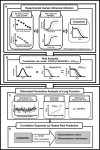
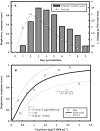
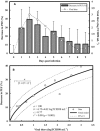
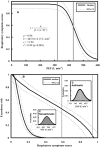
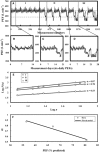

Similar articles
-
Acute respiratory infection, influenza vaccination and airway reactivity in asthma.Eur J Respir Dis Suppl. 1987;150:1-38. Eur J Respir Dis Suppl. 1987. PMID: 3480232
-
Asthma exacerbations. 2: aetiology.Thorax. 2006 Sep;61(9):809-16. doi: 10.1136/thx.2005.045179. Thorax. 2006. PMID: 16936237 Free PMC article. Review.
-
[Influenza and asthma].Rev Mal Respir. 1999 Feb;16(1):9-15. Rev Mal Respir. 1999. PMID: 10091256 Review. French.
-
Quantitative links between arsenic exposure and influenza A (H1N1) infection-associated lung function exacerbations risk.Risk Anal. 2011 Aug;31(8):1281-94. doi: 10.1111/j.1539-6924.2010.01575.x. Epub 2011 Feb 1. Risk Anal. 2011. PMID: 21284682 Free PMC article.
-
Comparison of serial monitoring of peak expiratory flow and FEV1 in the diagnosis of occupational asthma.Am J Respir Crit Care Med. 1998 Sep;158(3):827-32. doi: 10.1164/ajrccm.158.3.9707093. Am J Respir Crit Care Med. 1998. PMID: 9731012
Cited by
-
Assessing the oseltamivir-induced resistance risk and implications for influenza infection control strategies.Infect Drug Resist. 2017 Jul 20;10:215-226. doi: 10.2147/IDR.S138317. eCollection 2017. Infect Drug Resist. 2017. PMID: 28790857 Free PMC article.
References
-
- Pauwels RA, Buist AS, Calverley PMA, Jenkins CR, Hurd SS. Global strategy for the diagnosis, management, and prevention of chronic obstructive pulmonary disease: NHLBI/WHO Global Initiative for Chronic Obstructive Lung Disease (GOLD) Workshop summary. American Journal of Respiratory and Critical Care Medicine, 2001; 163:1256–1276. - PubMed
-
- Global Initiative for Asthma (GINA) . Available at: http://www.ginasthma.com.
-
- Kondo S, Abe K. The effect of influenza virus infection on FEV1 in asthmatic children: The time‐course study. Chest, 1991; 100:1235–1238. - PubMed
-
- Murphy KR, Eivindson A, Pauksens K, Stein WJ, Tellier G, Watts R, Leophonte P, Sharp SJ, Loeschel E. Efficacy and safety of inhaled zanamivir for the treatment of influenza in patients with asthma or chronic obstructive pulmonary disease—A double‐blind, randomised, placebo‐controlled, multicentre study. Clinical Drug Investigation, 2000; 20:337–349.
Publication types
MeSH terms
LinkOut - more resources
Full Text Sources
Medical

